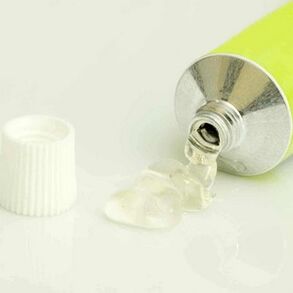Varicose veins of the small pelvis (VVVMT) in women is a chronic disease of the vascular system. The main problem is that women of all ages are susceptible, but it is very difficult to diagnose the disease at an early stage. Late diagnosis and late treatment can lead to serious complications in the form of infertility, numerous gynecological pathologies and early termination of pregnancy.
In order to protect your health as much as possible from serious consequences, you should get acquainted with pelvic varicose veins, how they manifest themselves and what treatment methods are available.
Reasons

IMGT - what is it? This is a complex medical problem that often affects the fragile female body. Hip varicose veins occur for several reasons:
- Pregnancyis the main cause of the onset of pelvic vascular pathology. During pregnancy, the strongest hormonal changes occur in a woman's body, the uterus puts the most pressure on the vascular system of the small pelvis. The end result is a significant disruption of blood flow. Women who have had difficult births are also at risk.
- Heredity.VVMT, fragile and thin venous walls, defects in venous valves, all of which can be transmitted through genes.
- Inflammatory processes.Various diseases of the female reproductive system, which are inflammatory in nature - a direct varicose vein.
- Overactive female hormones.Abnormal production of female hormones can cause VRV.
- Sex. Many couples actively use an unreliable method of contraception, such as disconnection. In addition to a questionable method of protection, a severed connection can cause a woman to develop VVMT. It is strange, but the pathology of the pelvic vessels can occur when a woman does not have an orgasm during sex.
- Activity Minimum. Sedentary work, minimal walking, sedentary lifestyle - all these are the causes of varicose veins, and not only the pelvis, but also the lower extremities.
- Heavy physical strength.For women, an overly active lifestyle, lifting weights, carrying heavy objects regularly, can result in varicose veins.
- Obstructed arteries.Obstruction, venous obstruction (phlebostasis) and obstruction of the vessels of the ovaries, uterus and fallopian tubes cause varicose veins.
According to statistics, VMT is most often diagnosed in girls aged 16-17 years (about 20% of all pathological detections). However, the disease is more severe for older women - after the age of 45, 80% of women are forced to fight varicose veins of the pelvic organs.
symptoms
The symptoms of pelvic varicose veins are very different. The difficulty in diagnosing the disease in the early stages is that most of these symptoms in women are related to a formal, temporary disorder in the body.

Without paying much attention to the emerging diseases, a woman must face an already advanced stage of pathology, which is supported by numerous complications.
The main symptoms are:
- regular menstrual disorders;
- severe abdominal cramps (aggravated after sexual intercourse, lifting weights, standing or sitting for a long time, hypothermia, as well as moments of nervous tension);
- urinary disorders;
- specific discharge from the genital tract;
- increasing negative emotional background in the premenstrual period;
- Appearance of venous networks and spider webs characteristic of varicose veins in the thigh, thigh and perineum.
The disease can manifest itself with 2-3 symptoms. Some women have noted the appearance of a complete list of the above symptoms.
Diagnostics
Varicose veins - ecstasy of pelvic vessels, causing disruption of blood flow to the external and internal genitals. Careful examination is required to diagnose this disease.
The followingmethods are used in modern medicine to study the vascular system of the pelvic organs:
- ultrasound examination (ultrasound);
- dopplerography;
- phlebography;
- laparoscopy.
Laparoscopyis rarely used in cases where there is a risk of many accompanying pathologies. It is performed using an endoscope.Perforation is required in the peritoneal region.
Ultrasoundis a common form of diagnosis widely used in many fields of medicine. Allows the doctor to see the general picture of the condition of the pelvic organs. This type of examination brings minimal discomfort to the patient and does not require surgery.
Doppler ultrasound of the pelvic vesselsis an ultrasound examination of the vascular system that allows early detection of venous valve dysfunction. During the examination, the doctor has the opportunity to visually present the condition of the vessels of the pelvic organs, shown on a special screen.
Pelvic phlebographyis an X-ray. Before the start of the study, the patient is injected with a contrast agent, which allows to maximize the condition of the blood vessels, the presence of blood clots, clots, stagnant processes.
Methods of treatment of varicose veins
Treatment of pelvic varicose veins depends on the stage of the disease:
- In the initial stagethe veins do not dilate more than 5 millimeters. The widest veins are in the upper part of the left ovary.
- In the second stage, the veins dilate by no more than 10 millimeters. The pathology involves both the left and right ovaries and the uterine vessels.
- In the third stagethe veins dilate by a maximum of more than 10 millimeters. Varicose veins are often accompanied by oncological neoplasms (tumors of a benign or malignant nature).
Doctors say that it is impossible to get rid of varicose veins completely. But this is not a reason to give up and allow the disease to develop. Quality, timely treatment will help delay vascular destruction, restore blood flow, relievesymptoms, and significantly improve a woman's quality of life.
Quality, timely treatment will help delay vascular destruction, restore blood flow, relievesymptoms, and significantly improve a woman's quality of life.
Phase I
First of all, you need to wear special medical underwear. Use drugs in the form of gels, ointments and creams, as well as drugs in the form of capsules and tablets (helps to normalize blood flow and strengthen the walls of blood vessels).
You need to start eating right - most fiber, vitamins, fruits and vegetables, minimum fat, salty, spicy, fried and smoked foods.
Phase II
Active medication support, diet, physiotherapy exercises, therapeutic linen, the healthiest lifestyle - this is the treatment formula. You can close traditional medicine prescriptions to increase the therapeutic effect.
In the early stages, it is extremely important to take strong blood medications that increase the tone of the arteries and blood vessels, as well as to prevent blood clots.
It is important to check and consult with your doctor regularly. In case of deterioration of health, the doctor may decide on a more radical treatment.
In some cases, the attending physician will prescribe embolization. By applying a special preparation (containing a substance that causes sclerosis), blood flow and the structure of blood vessels and arteries are restored.
Phase III
When diagnosed in the third stage of the disease, especially if there is an oncological neoplasm in the form of a tumor in the varicose veins, conservative treatment will be completely ineffective.
The only way to cope with the disease is surgery. Varicose veins are treated by cutting and closing the damaged vein.
Unfortunately, a cardinal method such as surgery is not an absolute guarantee of complete elimination of such a disease. In most cases, relapse is inevitable.
Preventive measures

As you know, prevention is easier than cure. There are several simple prevention methods that will help protect the body from this disease:
- Normalize the operating mode. Prolonged stay in a static position has a negative effect on the vascular system. Due to the nature of the profession, if you need to sit at the computer all day, or vice versa - if you need active work on your feet, it is important to take breaks. Perform simple warm-up exercises for a few minutes during the break. This not only allows you to relax and stretch your muscles, but also restores blood flow. Lifting of heavy objects should be minimized.
- Stable bowel function.Good stomach function, no constipation and regular healthy stools will minimize excess waste in the body. This requires high-quality nutrition, a lot of fiber, no alcohol and no junk food.
- Contrast shower.This method will not only strengthen the immune system, but also improve the functioning of the circulatory system. It is important to remember that the flow of water is directed to the perineal area to prevent varicose veins of the small pelvis.
Periodic medication. The use of creams and ointments, as well as prophylactic treatment, significantly increases the body's chances of protection against varicose veins. Every year it is necessary to take 4 courses of medication aimed at strengthening the walls of blood vessels and arteries, normalizing blood flow and protecting the circulatory system from blood clots.
You should consult your doctor before taking any prophylactic treatment or medication!
Result
Thus, pelvic varicose veins are an insidious disease that can have serious consequences and are very difficult to treat.
To prevent serious health problems, you should take good care of your body and seek help from a phlebologist immediately at the first signs of varicose veins.













































